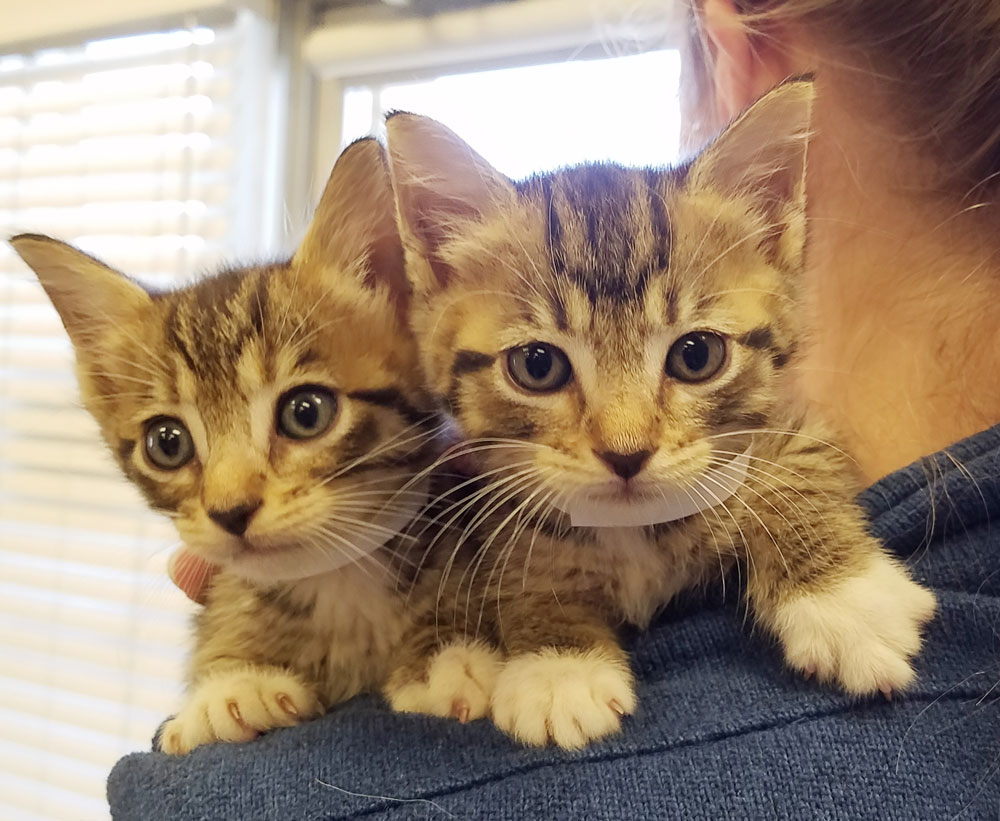Tips for Having a Well-Adjusted New Kitten

Socializing your sleek new bundle of joy is something you can do with your veterinarian’s help. Start here.
Did you know that kittens learn and develop a big part of their adult personality by 16 weeks of age? It’s true, and if you want a happy cat that takes life in a joyous stride, the clock is ticking. The positive (or negative) associations that young cats develop during this critical stage of brain development can last a lifetime… for better or worse. So let’s make it better!
Note: Don’t force things! Make sure these exposures are done in a way that’s comfortable for the kitten. Don’t keep exposing a kitten to a new experience if the cat is scared. Talk to your veterinarian for guidance.
1. Handle your kitten—literally
Make a point to touch your kitten all over. Don’t ever be forceful or push to the point of struggle. Just touch and hold gently and reward her acceptance with a special treat or gentle pet (kittens love to be stroked on both sides of their faces—maybe that’s all the reward you’ll need). Remember, over time, you’ll need to be able to trim toe nails, clean ears and brush teeth. If your new kitten actually enjoys these rituals, life is better for you both.
2. Socialize with your kitten
Let your kitten meet people of all shapes, sizes and mannerisms to learn there’s nothing to fear from people of all kinds. Introduce children, men and women, and even people with hats or costumes—Halloween comes around once a year. Don’t forget the treats to make “scary” fun! Warn everyone to go slowly and speak softly, because kittens can be cautious by nature.
3. Keep the peace (of mind)
Let’s face it, your cat is going to be sick or hurt at some point in his life, maybe starting with a spay or neuter surgery. You can make this better by training early not to fear the cat carrier. Buy one that you like too, because you need to keep it where you both can see it and think of it as an everyday thing. Leave it in the cat’s favorite area with the door open, and hide treats inside or even feed meals in there. Anything you can do to create a positive association with the carrier is a step in the right direction.
The best carriers are those with rigid sides and that open on the top as well as the front. That way, your kitten can feel safe in a hospital exam room while your veterinarian does a physical examination right inside the carrier. Your veterinary team will love you, and your kitten (and eventually grownup cat) won’t be as freaked out when she needs to ride in her carrier for any reason.
4. Adventure with your kitten
You and your cat will experience all life has to offer together, but the experiences won’t be as fun if your cat is afraid or difficult to handle. Take your kitten wherever you can for exposure to new places. Visit your veterinarian on a day just for a visit—and some friendly treats. And don’t forget to make her carrier into a cat nirvana, because that’s the way you can keep travel with her the safest.
Science shows that it’s easier for brains to remember bad experiences than good ones, so make sure your foundation for your kitten’s brain is filled with terrific associations. You can avoid big problems in the future and, let’s face it, handling and spending time with your kitten is a ton of fun!
&nsbp;
Source: Kathryn Primm, DVM. dvm360
- Behavior (12)
- Caring for your pet (266)
- cat (6)
- Community Events (19)
- dog (7)
- From Our Clients (15)
- Happy Tails (9)
- News (424)
- Press (53)
- Products (2)
- Questions (4)
- Recalls (1)
- Special Offers (5)
- Tips & Advice (231)
- Uncategorized (19)
- Veterinary Services (48)
